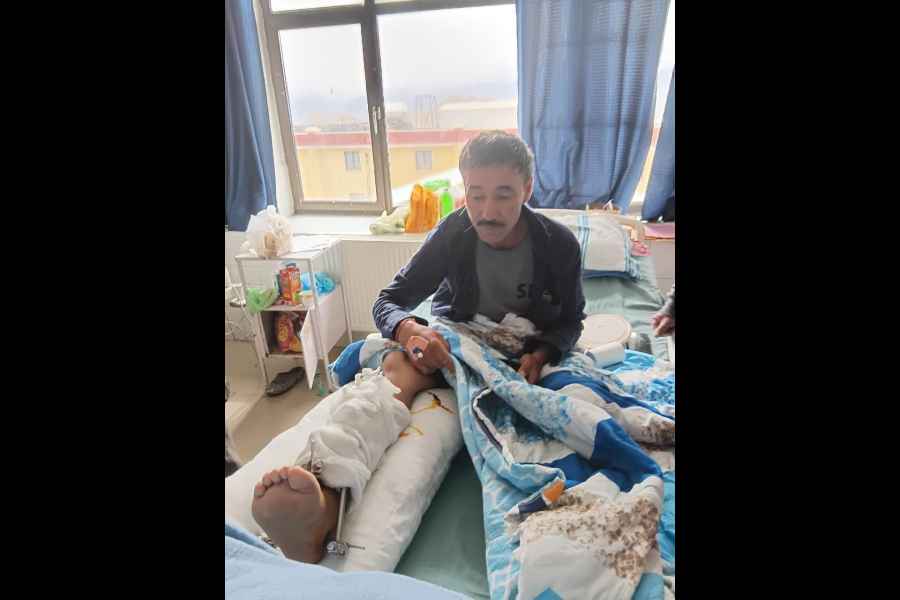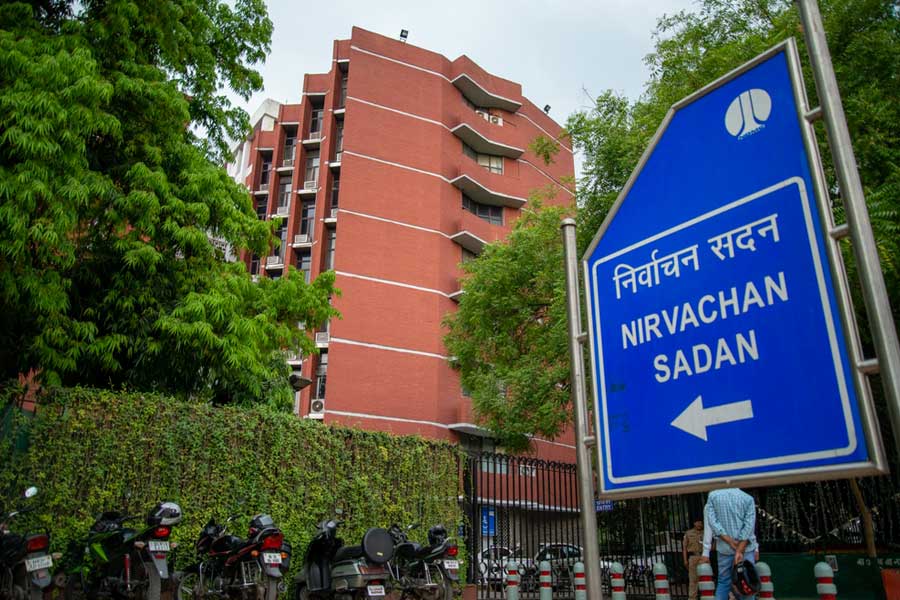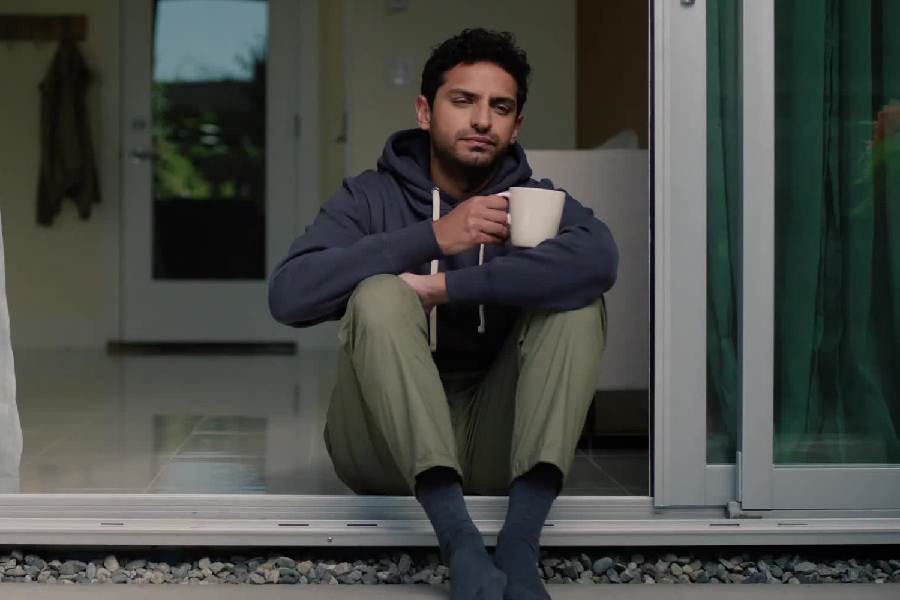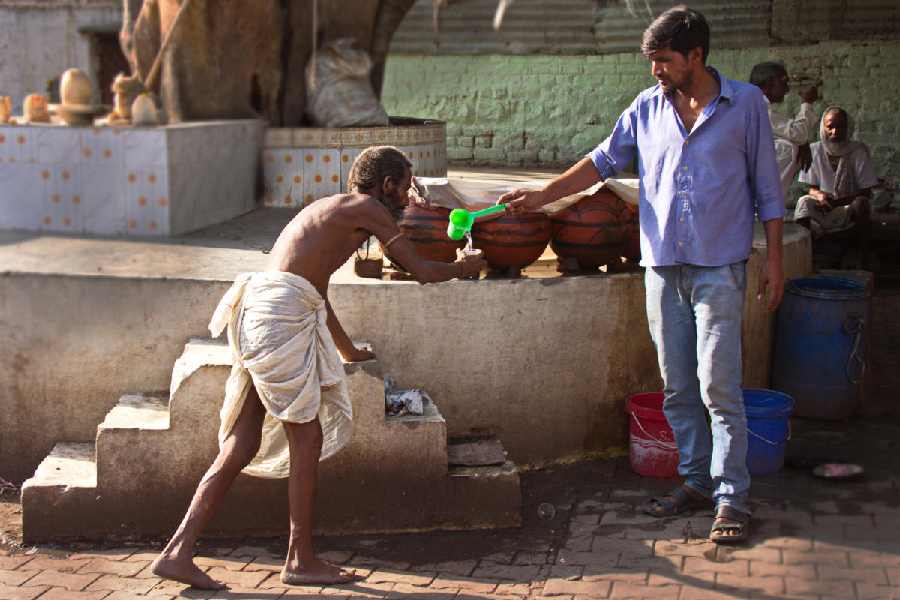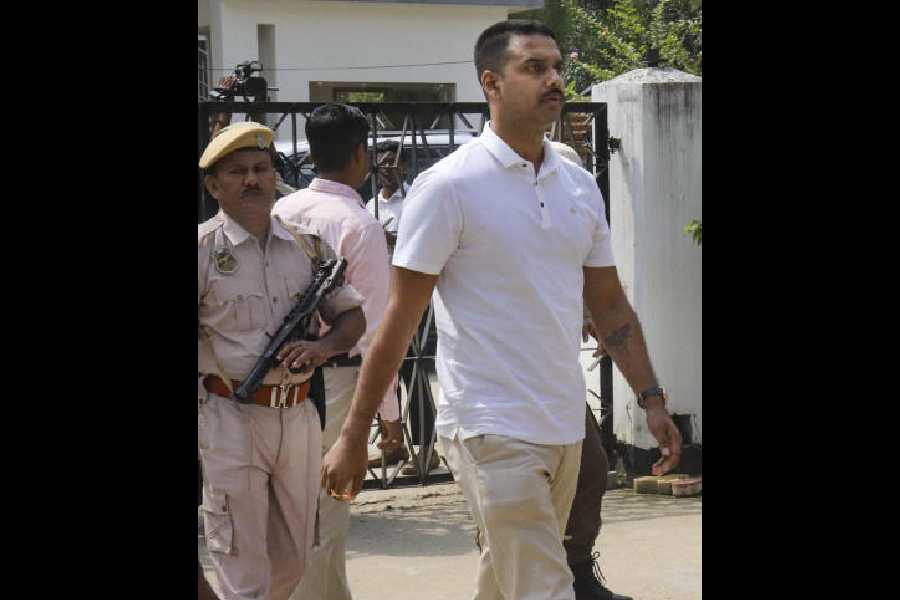|
|
Here’s an incident that happened on a Calcutta evening a few days ago. I spent the afternoon watching World Cup football with a bunch of friends. Afterwards we decided to go to Free School Street to celebrate another excellent performance by Lionel Messi and his team. As we got out of the taxi at the restaurant, a small boy — what people like to call a ‘street urchin’ — came up and thrust forward a bunch of heart-shaped balloons tied to plastic-sticks. Clearly, the kid wasn’t making any serious assessment about who his likely customers might be: we were four middle-aged men with no children attached and I’m sure none of us looked like we had an assignation with someone who might appreciate a heart-shaped balloon. As the boy offered us the balloons, one of us, the fit, intrepid, outdoors-type, made a feint with the tip of his cigarette, pretending he was going to explode the balloons. The kid stared back, his face blank with disbelief. Another one of us immediately remonstrated with the outdoors-type using non-family-viewing language and we all insisted he make amends by purchasing a balloon for each of us. So it came to pass that five wife-less, child-free, moddhoboyeshi men walked into the classic 50s restaurant holding heart-shaped balloons.
Having secured a table and festooned it, we soon began to step outside the restaurant to have a quick puff. All of us being victims of nicotine addiction, we did this in relays of two, leaving the others to keep up the run-rate on the drinks and snacks. My friend P and I were on our cigarette shift when we saw it happen. A fat man came out of the restaurant and lit up a cigarette. He was accompanied by a daughter in her late teens and she waved across the street to their driver who unpeeled himself from the bonnet of their Ford Endeavour SUV and prepared to resume duty. As the man sauntered forward, the balloon kid appeared again and held out his stock. The man looked at the kid, grinned, and, phat, phat, phat, pricked three balloons in quick succession with the tip of his cigarette. The kid looked like he has been socked in the face. His uncle, who was running the air-rifle balloon target under a tree, froze, as did the two of us. The fat man looked at his daughter and laughed wickedly, as if he had just forced Laxmi Mittal to sell him Arcelor at a low price. The kid stared at the tatters of pink hanging off the sticks and turned and ran, shielding the remaining balloons with his body. The teenage girl had enough humanity in her to be shocked, and she wailed, “Daddy, yeh kya kiya?” The man carried on chortling. He put his free hand into his pocket, thrust his paunch out further and took a deep drag of his cigarette as he surveyed the patch of Free School Street pavement he had just conquered. I took an imaginary pistol out of my back pocket, imagined walking up to him and putting three bullets in his head, one for each balloon, but in reality my friend and I stayed statue-still.
As we watched, the girl’s mother came out with the younger sister; the older girl walked up to her and said, “Pataa hai, daddy ne abhi just kya kiya?” The mother muttered something and led the girls away to the nearby paanwallah, where they carefully ordered their chewings. The fat man crossed the street, said a few words to his driver and leant upon his new SUV. Shortly after, the three women also waddled across the road. One by one, they all climbed into the car, the fancy suspension welcoming each of them with a slight bounce, and they drove away. The air-gun man’s look of horror was now replaced by an expression of old exhaustion. He turned away and called to a younger child to go find his brother.
In retrospect, I think I was waiting for the fat man to throw some small compensatory change at the air-gun man. Talking about it later with my friend, we agreed that we were both so electrified with rage that to move would have been to cause serious mayhem — neither of us is prone to violence but at that moment neither of us trusted himself to react with any control. Replaying the incident, which took all of maybe 15 seconds, several things boiled up.
It was not just the utterly callous disregard for someone who has nothing, but the sadistic pleasure the rich can take in ripping out those fragile livelihoods and, perhaps more crucially, the self-respect connected to those means of earning. The boy wasn’t begging, he wasn’t pestering anyone to buy his balloons. All he did, both times, either out of desperation or carelessness, was offer his wares to unlikely customers. The fat man burst his balloons simply because he could. He didn’t bother to offer the kid any money in return for his cruel little sport, simply because he could get away without doing so. He could walk away despite his daughter’s protests, despite the presence of bystanders — stunned and immobile though we were — because there was not the tiniest sliver of vivek in the man, not a trace of a conscience that said to him, “It will take this kid six months to earn what you have just spent on your dinner tonight, so don’t snatch away the pennies he makes, don’t destroy his sense of himself, his humanity.” It was as if this act illuminated each cruelty by the rich and powerful, whether unthinking or coldly calculated. Everything from Bhopal to Niyamgiri came into stark clarity under that searchlight. In turn, every kind of protest, lawful and unlawful, wise and foolish, suddenly became comprehensible: when faced with the irrational brutality of the upper class, why should anyone expect the underclass to react with fairness, logic and elegance? In fact, in the face of such constant brutality — the relentless kicks in the bellies of the poor — it is astounding that there isn’t more rage, that people don’t shatter the windscreens of SUVs with well-aimed stones, don’t set upon the unwary rich kid and take away his mobile and motorbike. If that’s what happens in Johannesburg and Mexico City, why not in Calcutta?
The second layer of realization was that my outdoors-type friend had himself come close to perpetrating a lesser version of the same brutality. I’m sure that my friend never intended for a second to actually carry out his threat, which he probably saw as playful. Yet the rest of us were so appalled even at the gesture that we did what we could to make amends, but it was clearly something that was, for want of a better phrase, in the air. To watch something nasty almost happen and then to see it actually take place a few minutes later was unnerving and I tried to make sense of the repetition. Try as I did, I could not play out the scene in a city like Delhi or Mumbai, replete though those cities are with their massive daily tramplings of the powerless. A middle-aged rich man in Mumbai-Delhi, I kept thinking, would not bother tangling with a street kid unless the kid was somehow in his way; it would just be a waste of his time — a commodity upon which he would put a high premium. Whereas in Calcutta it’s as if we are still encased in some old, small-town feudalism where the modern-day raja sahebs and seths still like to tie the peasant to their cars and drag them along for pleasure.
The thought also came up that perhaps even the poorest of the poor in Delhi-Mumbai are not so abject; they would not let themselves be subject to such gratuitous humiliation. Perhaps the rich in those cities know that they can push so far and no further lest the powder-keg explodes. Perhaps this keg exists only in my imagination but the question begged itself: when will that point be reached in Calcutta? And will the upper and middle-classes even realize in good enough time to escape?



